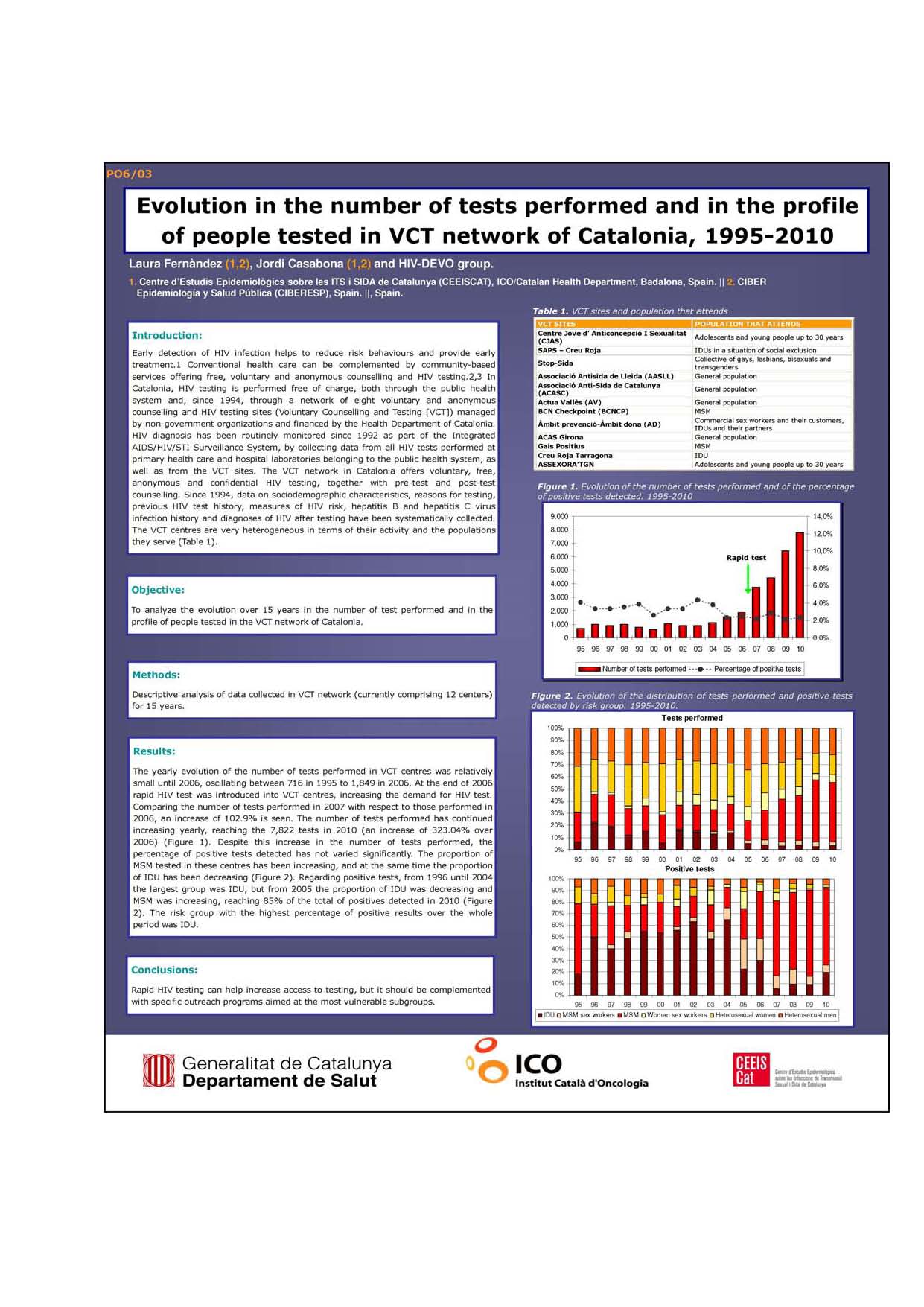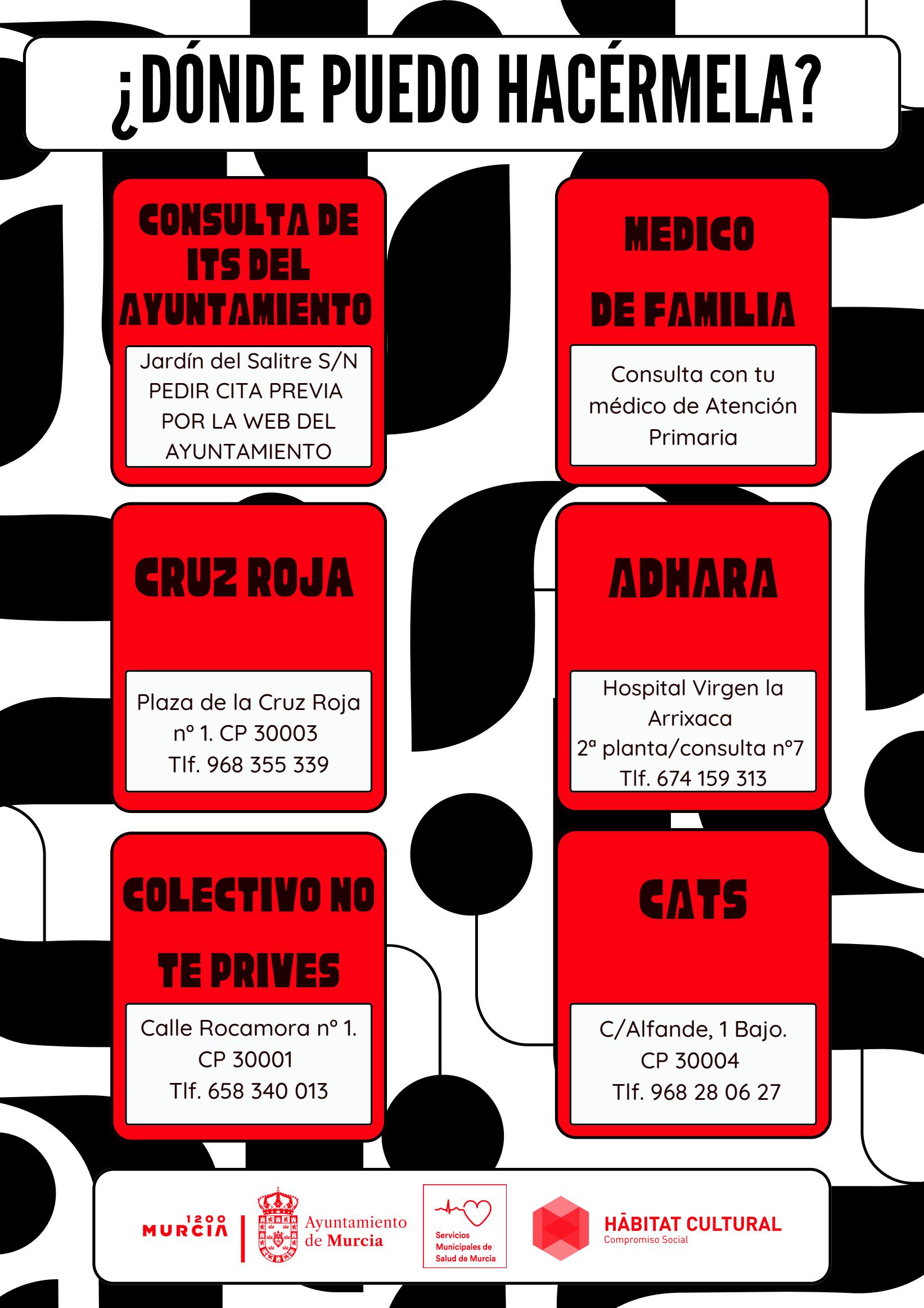Resum
Objective: To analyze the evolution over 15 years in the number of test performed and in the
profile of people tested in the VCT network of Catalonia. Methods: Descriptive analysis of data
collected in VCT network (currently comprising 12 centers) for 15 years. Results: The yearly
evolution of the number of tests performed in VCT centres was relatively small until 2006,
oscillating between 716 in 1995 to 1,849 in 2006. At the end of 2006 rapid HIV test was introduced
into VCT centres, increasing the demand for HIV test. Comparing the number of tests performed
in 2007 with respect to those performed in 2006, an increase of 102.9% is seen. The number of
tests performed has continued increasing yearly, reaching the 7,822 tests in 2010 (an increase of
323.04% over 2006). Despite this increase in the number of tests performed, the percentage of
positive tests detected has not varied significantly. The proportion of MSM tested in these centres
has been increasing, and at the same time the proportion of IDU has been decreasing. Regarding
positive tests, from 1996 until 2004 the largest group was IDU, but from 2005 the proportion of
IDU was decreasing and MSM was increasing, reaching 85% of the total of positives detected in
2010. The risk group with the highest percentage of positive results over the whole period was IDU.
Conclusions: Rapid HIV testing can help increase access to testing, but it should be complemented
with specific outreach programs aimed at the most vulnerable subgroups. (Extraído del "Programme and abstract book " del congreso)






